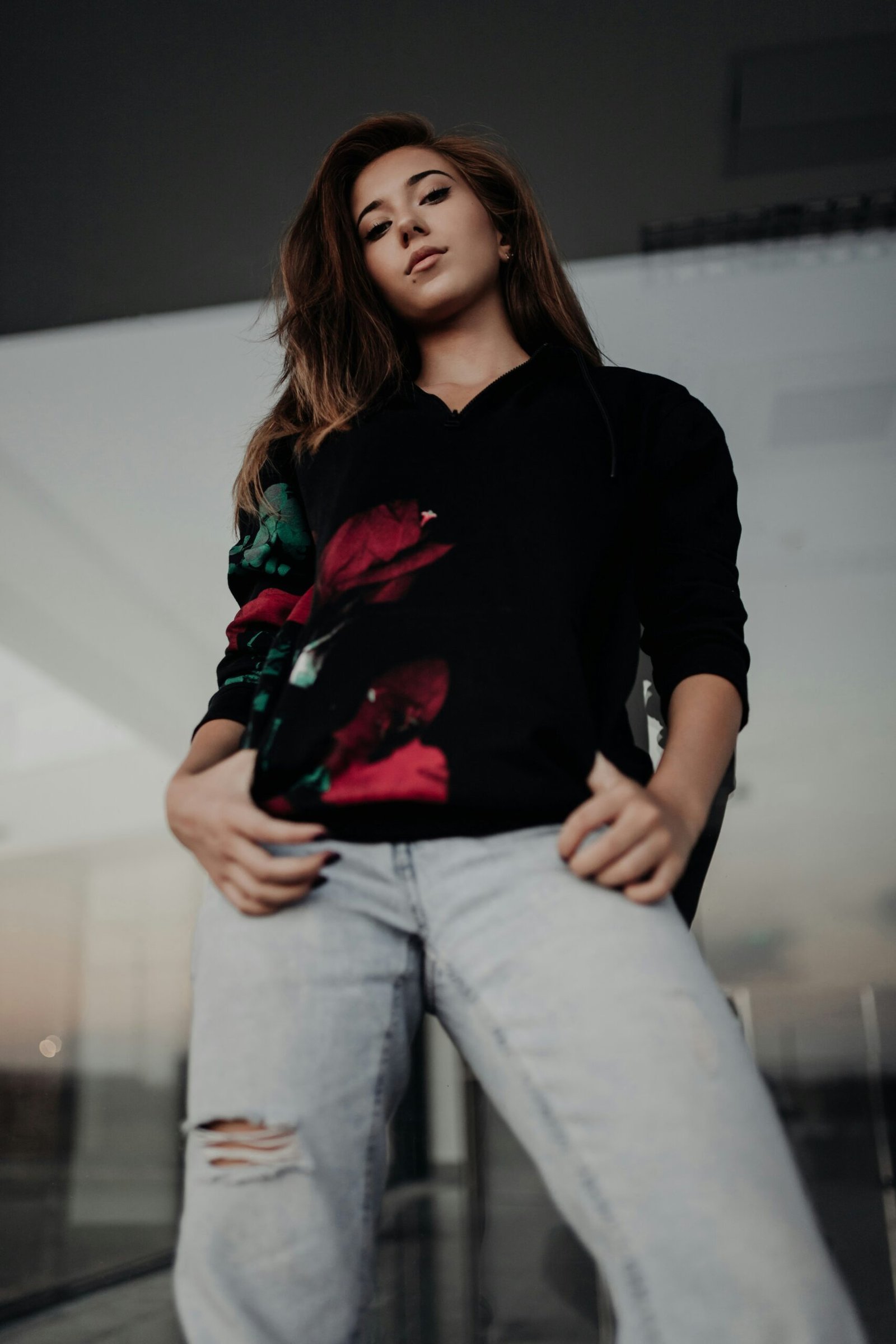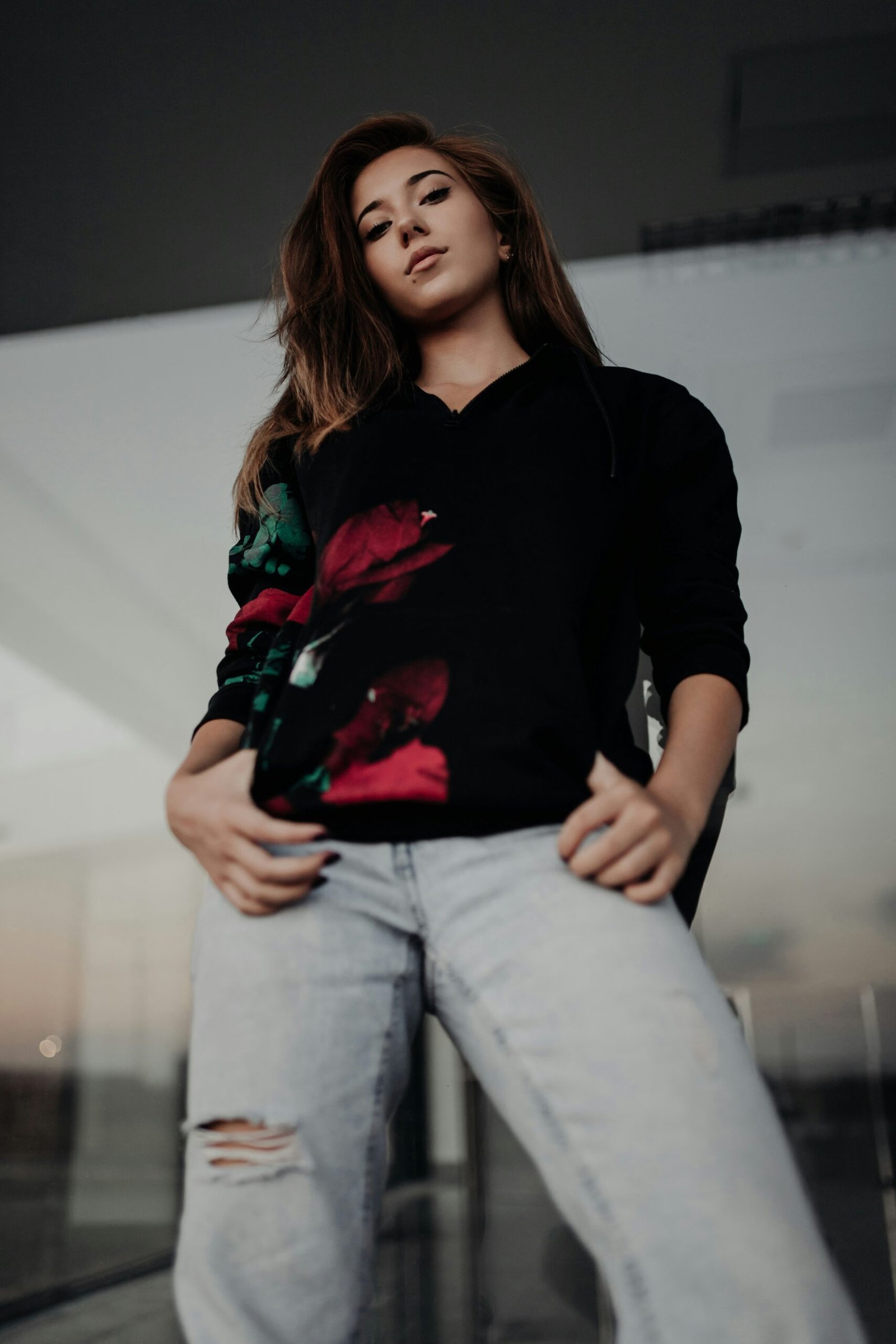
Introduction to Youthful Street Fashion
Youthful street fashion is a dynamic and ever-evolving mode of self-expression that has its origins in various subcultures and urban neighborhoods around the globe. Emerging primarily in the 1950s and 60s, youthful street fashion has developed through the influence of diverse cultural, musical, artistic, and social movements. It began as a way for young people to visually articulate their identities and individualism, often in direct contrast to mainstream fashion. Over time, it has become a powerful vehicle for social commentary and a significant driver of global fashion trends.
One of the most distinctive elements of youthful street fashion is its eclectic nature. Drawing inspiration from a myriad of sources, it is a melting pot of styles that include hip-hop, punk, skate culture, and even high fashion. Its ability to continually adapt and incorporate elements from various subcultures makes it a living canvas that reflects the vibrancy of urban life. Moreover, street fashion is heavily influenced by the music scene, with genres such as rap, rock, and electronic dance music playing pivotal roles in shaping its aesthetic and ethos.
Art also plays an instrumental role in the evolution of street fashion. Graffiti, street art, and graphic design are often inextricably linked to fashion choices, creating a visual dialogue between what people wear and the streets they walk. Each piece of clothing can tell a story, whether it is through bold graphics, intricate textiles, or a choice of color palate that conveys a particular emotion or statement.
Social movements have significantly impacted youthful street fashion as well. From civil rights and feminist movements to environmental activism and LGBTQ+ pride, street fashion often serves as a mouthpiece for young people advocating for change. This is evident in the slogans worn on t-shirts, the reuse of vintage or thrift items, and the collaboration between fashion brands and social activists.
In essence, youthful street fashion is much more than clothing; it is an amalgamation of history, culture, art, and social consciousness, constantly reinventing itself to stay relevant and resonate with the dynamic spirit of youth around the world.
The Role of Social Media in Street Fashion
In today’s digital age, social media platforms such as Instagram, TikTok, and Pinterest play an instrumental role in the dissemination of street fashion trends. These platforms act as the modern-day catwalks, where fashion influencers, bloggers, and even everyday users showcase their style, and in doing so, shape and spread trends on a global scale.
Instagram, with its visually driven content, enables users to easily share and discover new street fashion styles. The platform’s features, such as stories and IGTV, allow influencers to create fashion content dynamically, reaching millions of followers who are keen to adopt the latest trends. Hashtags and geotags further enhance discoverability, allowing users to track fashion movements across different urban centres.
Similarly, TikTok has become a viral hub for fashion enthusiasts. The app’s algorithm promotes content that quickly gains traction, putting emerging street fashion trends in the spotlight almost instantaneously. Short, engaging video clips showcasing outfits, styling tips, and fashion hauls create a seamless blend of entertainment and trendsetting. This makes TikTok particularly effective for capturing the spontaneous and spirited essence of youthful street fashion.
Pinterest also deserves a mention as a source of inspiration for street fashion. Users create visual boards that curate their favorite street fashion looks, enabling a vast sharing of ideas and styles. The platform’s searchability and organizational structure allow for easy navigation through an endless stream of fashion-forward pins, feeding into a continuous cycle of inspiration and dissemination.
Influencers and fashion bloggers serve as pivotal figures in this ecosystem. They not only share their personal styles but also collaborate with brands, setting benchmarks for what’s fashionable. However, the democratizing power of social media means that anyone can become an influencer. Everyday users contribute substantially to the dialogue around street fashion, often setting grassroots trends that are amplified by their digital reach.
Thus, social media has effectively become a global runway, where the spirit of youthful street fashion can proliferate without geographic boundaries. This global connectivity ensures that street fashion remains dynamic, inclusive, and ever-evolving.
Key Elements and Iconic Pieces
Youthful street fashion is a dynamic and evolving style that revolves around a few quintessential elements. One of the most recognizable features is the oversized hoodie. Typically made from soft, durable materials like cotton and fleece, these hoodies not only offer comfort but also provide a relaxed, laid-back vibe that is the cornerstone of streetwear. Oversized hoodies often come in bold, solid colors or are adorned with eye-catching graphics and logos, making them a versatile staple in any street fashion wardrobe.
Another pivotal component of youthful street attire is the sneaker. Footwear in this genre is more than just an accessory; it is a statement. Sneakers range from the minimalist designs of brands like Converse and Vans to the intricate, collaboration-heavy releases from iconic names such as Nike and Adidas. Materials like leather, suede, and mesh are frequently used, with colors spanning the entire spectrum—from monochromatic tones to vibrant palettes. Unique features like high-tops, chunky soles, and innovative lacing systems are often seen in these coveted pieces.
Graphic tees also play a crucial role in street fashion. These shirts are a canvas for self-expression, often featuring bold prints, artistic designs, and thought-provoking messages. The prevalence of graphic tees owes much to the influence of pioneering brands like Supreme and Obey, which have taken simple cotton t-shirts and transformed them into high-demand, collectible items through their limited releases and striking visuals.
Additionally, statement pieces are integral to this style, serving as focal points of an outfit. These can include jackets with intricate embroidery, caps emblazoned with unique logos, or even accessories like thick chain necklaces and branded backpacks. The infusion of distinctive materials, such as denim and varsity fabrics, coupled with vibrant colors and patterns like camouflage and tie-dye, further enriches the aesthetic.
On the designer front, names like Virgil Abloh with his brand Off-White, and Nigo, the founder of BAPE, stand out for their significant contributions to street fashion. Their innovative designs and collaborations have continually pushed the boundaries, merging luxury with everyday wear and making street fashion accessible yet aspirational for the youth. This blend of comfort, versatility, and distinctive style captures the spirited essence of youthful street fashion.
Regional Variations and Global Impact
Street fashion around the globe reflects a vibrant tapestry woven from diverse cultural, climatic, and social threads. Major cities such as Tokyo, New York, Paris, and Seoul have established themselves as epicenters of distinct street fashion styles, each contributing unique elements to the world fashion stage.
Tokyo’s street fashion is renowned for its eclectic and avant-garde nature, heavily influenced by the local youth culture and subcultures such as Harajuku and Shibuya. Bold color palettes, layered outfits, and unconventional accessories define the Tokyo street style, often serving as a canvas for individual expression. The cultural acceptance of bold experimentation promotes an ever-evolving fashion scene.
In comparison, New York street fashion radiates a cosmopolitan essence blended with practicality. The city’s diverse melting pot of cultures is reflected in its fashion, where influences from various ethnicities harmonize with a city-centric approach. Emphasis on sleek, monochromatic tones and statement pieces reveals a blend of sophistication and functionality, accentuated by the city’s fast-paced lifestyle.
Paris, long considered the fashion capital of the world, offers street fashion characterized by effortless elegance and chic minimalism. A blend of haute couture and accessible everyday wear, Parisian style embraces understated sophistication. Key elements include tailored designs, classic cuts, and a neutral color scheme, mirroring the city’s rich fashion heritage and a penchant for timeless aesthetics.
Seoul’s street fashion, meanwhile, is distinctive for its embrace of modernity fused with traditional Korean influences. Trend-forward and highly dynamic, it often features playful contrasts and innovative silhouettes. The influence of K-pop culture and Korean dramas is significantly tangible, steering global attention towards Seoul’s street fashion scene.
These regional styles do not exist in isolation. The increasing interconnectedness of the world through social media and global travel facilitates a continuous exchange of street fashion trends. Tokyo’s experimental edge, New York’s diverse practicality, Paris’s timeless grace, and Seoul’s modern eclecticism – collectively, they weave a global sartorial narrative that both celebrates and transcends regional distinctions.
Sustainable Practices in Street Fashion
In recent years, the street fashion scene has embraced a significant shift towards sustainability, paralleling a broader societal move towards eco-conscious living. This transformation is driven largely by young fashion enthusiasts who are increasingly aware of the environmental impact of their clothing choices. They are turning away from fast fashion, characterized by its mass production and short lifecycle, towards more sustainable fashion options. This changing trend is not only a reflection of their personal style but also an expression of their ethics and values.
One prominent practice emerging within youthful street fashion is thrift shopping. By purchasing second-hand clothing, young people mitigate the demand for new clothing production, thus reducing textile waste and the carbon footprint associated with manufacturing and transportation. Thrift stores and vintage shops have become hotbeds of creativity and uniqueness, offering a treasure trove of items that can be effortlessly incorporated into trendy streetwear ensembles.
Upcycling, another growing trend, takes sustainability a step further by transforming old or discarded items into new, stylish pieces. This innovative approach enables fashion enthusiasts to customize their wardrobe creatively, crafting unique garments that reflect their personal taste while contributing to a circular fashion economy. Street fashion icons often proudly showcase their upcycled outfits on social media, inspiring others to follow suit and create their own bespoke styles from pre-existing materials.
Supporting sustainable brands is also becoming increasingly important for the youth involved in street fashion. Brands that champion eco-friendly practices, such as using organic materials, employing ethical labor practices, and minimizing waste through innovative design, are gaining popularity. Brands like Patagonia, Everlane, and Reformation are not only known for their stylish offerings but also for their commitment to sustainability. These brands have managed to capture the spirit of youthful street fashion while promoting a more responsible approach to consumption.
Various eco-friendly street fashion initiatives are emerging globally, reflecting this conscious movement. For example, the “Street Store” concept, which provides free fashionable clothing to the homeless, or the “Swap Meets,” where individuals exchange their preloved fashion items, are both innovative responses to fashion’s sustainability challenge. These initiatives reinforce the role of community and shared responsibility in driving sustainable fashion forward.
Street Fashion and Identity
Street fashion stands as a profound medium for self-expression among the youth, encapsulating the dynamic nature of individual and collective identities. The essence of youthful street fashion lies in its ability to convey an array of personal narratives, reflecting both individuality and a sense of belonging to a broader community. It serves as a visual lexicon through which young people articulate their uniqueness while simultaneously aligning with various subcultures and movements.
Fashion psychologists indicate that the clothes we wear profoundly impact our self-perception and the way others perceive us. Dr. Karen Pine, a professor of psychology at the University of Hertfordshire and author of “Mind What You Wear: The Psychology of Fashion,” asserts that clothing serves as a “second skin,” representing our inner states and personal values. For many youths, street fashion becomes a canvas that illustrates their identity and socio-cultural stance, providing an immediate, non-verbal form of communication.
In interviews with young fashion enthusiasts, a common theme emerges: street fashion is not just about aesthetics but also about storytelling. “Through what I wear, I can tell a story about who I am—my interests, my beliefs, my background,” says 19-year-old fashion student Maya. “Street fashion gives me an outlet to challenge the norms and show that I’m more than just a student or a worker. I’m an individual with a unique narrative.”
The role of youthful street fashion extends beyond personal identity, delving into realms of collective belongingness. Subcultures such as skaters, hip-hop enthusiasts, and punk communities utilize fashion as a unifying thread, fostering a sense of camaraderie and shared ideals. For instance, oversized hoodies and ripped jeans may symbolize the rebellious spirit of a skater, while bold, vibrant prints and accessories can signify an allegiance to hip-hop culture.
Moreover, street fashion can be a vehicle for political or social statements. Young activists often utilize their attire to echo sentiments of resistance and social change. Whether it’s through slogan tees, socially conscious brands, or DIY clothing, these fashion choices become an emblem of activism and advocacy.
Ultimately, youthful street fashion acts as a vibrant tapestry woven with threads of individuality, unity, and socio-political discourse. It provides a unique lens into the minds and lives of young individuals, representing far more than just clothing—it represents the spirit of youth itself.
The Future of Youthful Street Fashion
Youthful street fashion is continuously evolving, driven by the dynamic interplay of cultural shifts, technological advancements, and creative expressions. Looking ahead, several emerging trends suggest a vibrant future for this fashion sector. One anticipated evolution is the increasing integration of technology and fashion, particularly through wearable tech. Innovations like smart fabrics and augmented reality (AR) try-ons are poised to revolutionize how young consumers interact with their clothing, blending digital experiences with everyday wear.
Music and gaming, long-standing influences on streetwear, will remain crucial in shaping future trends. Iconic musicians and gaming personalities with vast followings can ignite global fashion movements with their unique styles. For instance, collaborations between fashion brands and gaming franchises have already begun to blur the lines between digital avatars and real-life wardrobes, creating a crossover appeal that resonates deeply with younger generations. This fusion will likely lead to more personalized and customizable fashion choices, reflecting the rapidly changing tastes and preferences of the youth.
Moreover, the growing awareness of sustainability and ethical consumption among young people is set to redefine street fashion’s values. Generation Z, in particular, prioritizes environmental impact and social responsibility. Consequently, there will be an increased demand for eco-friendly materials, upcycled garments, and transparent supply chains. Brands that align with these values may find themselves at the forefront of the industry, championing a new era of conscious fashion.
Virtual reality (VR) also holds significant potential for reshaping youthful street fashion. Virtual fashion shows and digital-only collections offer innovative ways for brands to present their creations, making fashion more accessible and inclusive. These immersive experiences can capture the spirit of youthful street fashion while reducing the environmental footprint of traditional fashion events. As VR technology advances, it may become a mainstream platform for fashion exploration and expression.
In essence, the future of youthful street fashion will be marked by the seamless integration of technology, cultural convergence, and a strong emphasis on sustainability. As new generations bring fresh perspectives and innovative ideas, the essence of youthful street fashion will continue to thrive, adapting to the ever-evolving landscape of global trends and technological possibilities.
How to Embrace Street Fashion
Embracing youthful street fashion involves more than just wearing trendy clothes; it’s about infusing your personal style with elements that reflect the dynamic and creative spirit of the streets. Whether you’re a novice or a fashion enthusiast looking to diversify your wardrobe, here are some practical tips to effectively incorporate street fashion into your everyday outfits.
Finding inspiration is the first step. Social media platforms like Instagram and Pinterest are treasure troves of street style ideas. Follow influencers, designers, and brands that resonate with your aesthetic. Street fashion is often characterized by its eclectic mix, so don’t hesitate to draw inspiration from multiple sources.
When selecting pieces, versatility is key. Opt for items that can be easily mixed and matched, allowing you to create a variety of looks. Essential items in a streetwear wardrobe typically include graphic tees, hoodies, joggers, and sneakers. Additionally, accessories like caps, oversized sunglasses, and statement jewelry can add a unique flair to your outfits.
Blending street fashion with your personal style is vital to ensuring that your look feels authentic. Start by integrating one or two streetwear elements into your existing wardrobe. For instance, pair a classic blazer with a graphic tee and ripped jeans, or combine a high-end handbag with vintage sneakers. Experimenting with different combinations will help you find the right balance.
Shopping on a budget doesn’t mean compromising on style. Look out for sales, shop at thrift stores, and consider DIY projects to customize your clothes. Many streetwear brands offer affordable pieces without sacrificing quality or style. Supporting independent streetwear brands not only ensures you’re getting unique items but also contributes to the growth of smaller enterprises.
Incorporating street fashion into your wardrobe is about expressing individuality and staying ahead of trends. By finding inspiration, choosing versatile pieces, mixing with your personal style, shopping smartly, and supporting independent brands, you can confidently embrace the vibrant world of youthful street fashion.


